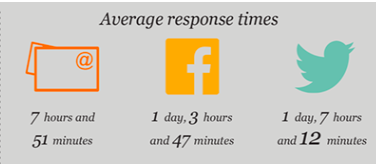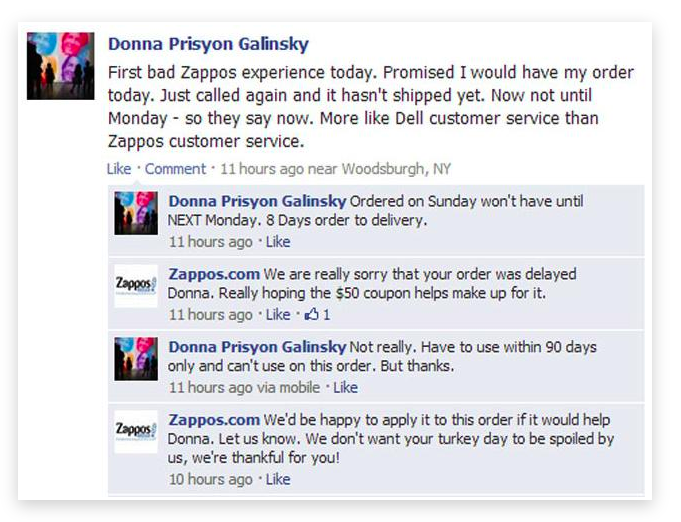First-time Response And First-time Resolution: What You Need To Know
How to prioritize your channels to provide top-notch customer support.
Introduction
It’s no secret that customer service response time is an important part of any businesses success. A happy customer contributes to a happy business.
But because customer support is spread across multiple channels, providing timely customer support is not always so simple. Customers prefer to use multiple channels to report their customer service requests and then expect different response times depending on the channel.
According to our interview research with multiple heads of customer service management, the average expected first-time response wait time based on the channel is:
- Live Chat: Between 2-5 minutes.
- Phone: Between 2-3 minutes.
- Email: Between 12-24 hours.
- Social Media: Between 1- 24 hours.
That being said, Superoffice recently conducted a customer service benchmark report with 1000 companies across the world revealing that the actual average response time to handle customer service requests is 12 hours. They also discovered that 62% of businesses don’t respond to customer service requests at all!

Another 2015 study from Eptica on actual customer service response times:

However, despite customer expectations, we also discovered throughout our research that companies often prefer to prioritize one channel for customer service requests based on what they believe to be the best method of communication. For example, one interview we conducted with a head of customer support said that their team “never” responds to emails because they prefer to use the phone to call their customers and solve their problems this way.
We also discovered in our interviews that “First-Time Response” is not the most important priority for these companies. Instead, it’s the “First Time Fix” or the “First Time Resolution.”
Customer service managers ask themselves “How many interactions are needed with the customer before the case is initially solved and how can their case be solved in the most efficient and timely manner?” Instead of “How can we respond to customers as quickly as possible?”
Read more; “This is what You Need to Know About Omni-Channel Customer Support”
In other words, first response time is an important factor in providing customer service, but if you want to go above and beyond customer expectations and provide the best support possible, you have to strategize how and where you’ll solve the problem (not just acknowledge the problem).
Why is your customer service first response time important?
Quick response times show customers that their questions and concerns are important to your business. In other words, it’s a gesture that shows customers that their needs are your needs. In fact, Zendesk’s research survey found that “69% attributed their good customer service experience to a quick resolution of their problem.” As we mentioned earlier, 62% of businesses don’t respond to customer service requests at all. So by simply improving your customer response time across all channels, you can stand out from your competitors. Responding in a timely manner across all channels can reveal opportunities that otherwise would’ve been missed. For example, if Zappos did not monitor and respond promptly to every channel, the opportunity to remedy a bad customer service experience would’ve been missed.

Read more; “Deliver a Quality Customer Service Experience”
Why is first-time resolution important?
- Customers expect to be acknowledged within a certain time frame, and they also expect their problem to be solved within a certain time frame. Using the right channel to solve your customer’s questions will ensure that their issues are dealt with efficiently. This leads to a high customer satisfaction rate which will also increase customer loyalty as well as customers revenues. A satisfied customer will most likely give their repeat business.
- When you’re able to solve a customer’s issues in one email or call, you improve the efficiency of your businesses in terms of operational costs. In fact, according to Ameya, “ A 15% increase in [First-Time Resolution] results in a 57% reduction in repeat calls.” New call-to-action
How do i know which channel to use and when?
The idea is to understand what problem your customer is having, the severity of the issue, and the estimated time you believe it would take to solve. After analyzing, you can decide which channel will satisfy your customer’s needs with the most efficiency. For example:
- Email is in the lead when it comes to customer service. In fact, according to Superoffice, email has a 56% effectiveness rate for customer retention (compared to 37% retention effectiveness with social media). The reason is that emails are convenient but, unlike social media, are also private and descriptive.
- Live chat is fantastic for answering frequently asked questions without having to use the phone or send the same email over and over. Furthermore, you can provide 24/7 customer support by installing a chatbot to help answer common questions after work hours.
- Social media is a convenient customer service tools in the sense that any customers are already having about your business on Facebook, Twitter, etc. The benefit of social media is that the customer doesn’t have to come to you, you can go to the customers by tracking conversations around your business. You can then solve any issues promptly and using the same channel.
- At Omnicus, we believe that phone calls are best used to solve complex cases that require a deeper explanation. Plus, phone calls are more personal and will truly show your customers that you’re interested in solving their problems quickly and efficiently.
Read more; “Why Chatbots Are The Secret Ingredient"
Conclusion
Prioritizing different channels is important for first-time responses, but once the first-time response has been made, it’s important to prioritize the use of all your channel to go above and beyond the customer’s expectations and provide the best customer service possible.
Sources:
- https://www.shopify.com/enterprise/94678726-the-need-for-speed-why-customer-service-needs-to-be-faster-than-ever
- https://www.superoffice.com/blog/omni-channel-customer-service/
- https://www.superoffice.com/blog/response-times/
- https://www.eptica.com/500_retail_study_2015
- http://www.insightsquared.com/2015/03/why-is-everyone-so-obsessed-with-first-contact-resolution/
- https://www.shopify.com/blog/6992318-4-examples-of-excellent-customer-service-on-facebook
